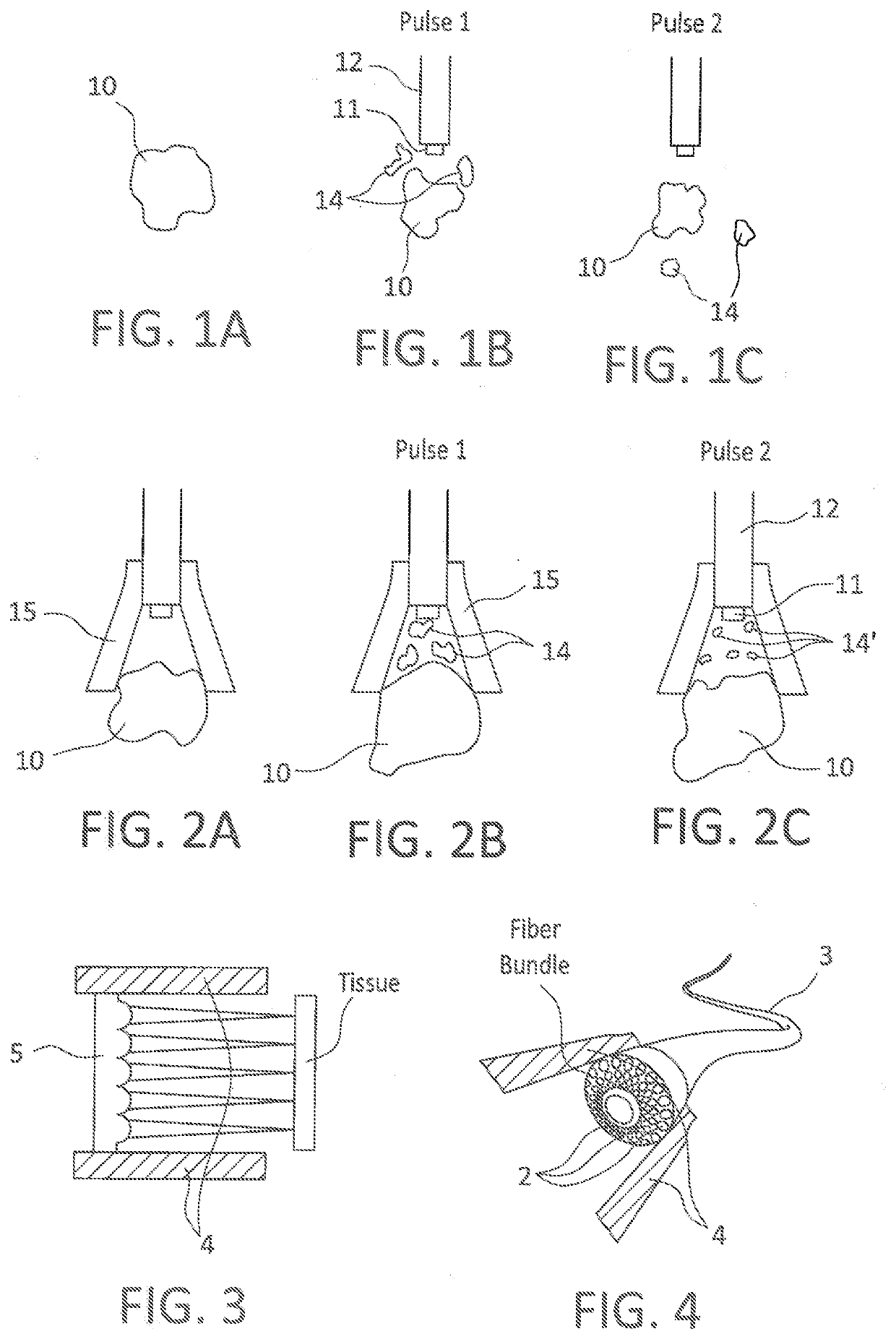Method of reducing stone fragments to dust during laser lithotripsy
a laser lithotripsy and stone fragment technology, applied in the field of laser surgery, can solve the problems of inability to destroy the stone fragment during the procedure, inability to remove the stone fragment and multiple beam arrangements that can still leave fragments in the majority of procedures
- Summary
- Abstract
- Description
- Claims
- Application Information
AI Technical Summary
Benefits of technology
Problems solved by technology
Method used
Image
Examples
Embodiment Construction
[0019]As shown in FIGS. 1A to 1C, a stone 10 in initially subjected to a first pulse emitted by the tip 11 of a fiber 12, resulting in the separation of fragments 14 from the stone 10. These fragments, like the stone is itself, are subject to retro-repulsion that, because of the lower mass of the fragments, tends to push them to the side or back behind the stone and out of reach of the laser. In order to dust these fragments, the operator must locate them and, in effect, chase them down by maneuvering the fiber tip into proximity to the fragments, even as the fragments continue to be pushed away from the fiber by retro-repulsion.
[0020]To solve this problem, a protective cap, spacer tip or standoff sleeve, preferably in the form of a compressible soft tip 15 of the type described in PCT Publ. No. WO / 2017 / 192869, is secured to an end of the fiber such that the distal end of the protective cap extends beyond the end of the fiber, as illustrated in FIGS. 2A to 2C. As pulses are applied ...
PUM
 Login to View More
Login to View More Abstract
Description
Claims
Application Information
 Login to View More
Login to View More - R&D
- Intellectual Property
- Life Sciences
- Materials
- Tech Scout
- Unparalleled Data Quality
- Higher Quality Content
- 60% Fewer Hallucinations
Browse by: Latest US Patents, China's latest patents, Technical Efficacy Thesaurus, Application Domain, Technology Topic, Popular Technical Reports.
© 2025 PatSnap. All rights reserved.Legal|Privacy policy|Modern Slavery Act Transparency Statement|Sitemap|About US| Contact US: help@patsnap.com

